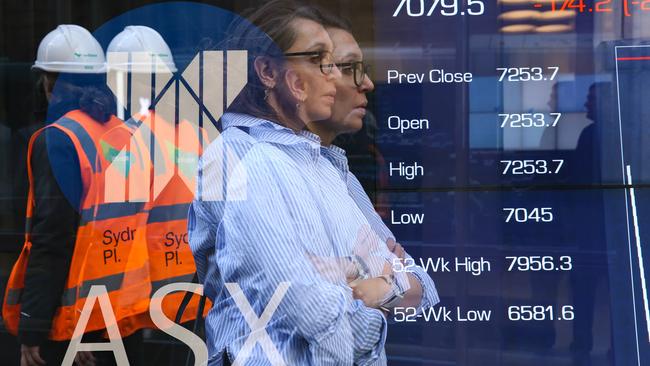Why the ASX earnings season is off to a great start
Top stocks have bolted out of the gates in a great start for the results season as many top companies beat market expectations.

Investor sentiment in early 2024 is probably best described as “good news is still good, of course, but bad news can be good too, as long as it is not too negative”.
Investors in the local sharemarket are once again reminded how powerful a driver general sentiment can be.
At face value, the ASX 200 might only be up slightly for the year to date – which seems rather disappointing when compared with the raging bull market that seems to be dominating indices in the US – but underneath, at the individual stock level, the local February results season is basking in a generally supportive environment.
Early signs are that companies are meeting or beating market expectations and, equally noteworthy, investors seem prepared to look over short-term niggles and imperfections, instead focusing on better prospects ahead and on getting aboard once the results release is out of the way.
Results seasons in Australia have increasingly become a second-half (of the month) phenomenon and so the first 12 days of February only offer a brief snippet into what the rest of the season might have in store. But there’s no room for debate the early signals look extremely supportive of an overall pro-risk-taking environment.
On assessing 21 market updates, no fewer than 11 have beaten market forecasts, with a further nine reporting in line. The one “miss” came from REA Group which on broadbased appreciation still released a “solid” performance, carried by “robust” growth and ongoing prospects of continued strong growth momentum ahead. (REA is a subsidiary of News Corporation, owner of The Australian).
Most analysts covering the sector acknowledged operational momentum had actually surprised to the upside. The one blemish was management at Australia’s number one property portal flagging there would be higher costs in the year ahead as the company spends more to solidify its growth path.
Two things to keep in mind: share prices respond to how results compare to expectations, which is not necessarily a great indicator for what the future of a company looks like. Spending more means lower growth in profits which is often, though not always, taken as a negative by short-term traders.
As it happens, REA shares sold off on day one, rallied on the following day, and then retreated slightly on Monday for an overall relatively flat trajectory that has dominated the shares so far in 2024. It is worth noting REA shares have almost doubled in price since mid-2022 and rallied around 30 per cent since late October.
Trading on forward-looking PE ratios of respectively 54 times and 45 times for this year and next, the average REA target price of $172.74 sits below today’s share price. But as a high-multiple, market-leading quality growth company on the ASX, REA shares should benefit from RBA rate cuts and lower bond yields later in the year.
As such, REA might well be the poster boy of current market sentiment, and indicative of what to expect, generally, from the rest of the reporting season in the coming weeks.
Share prices for all of AGL Energy, Audinate Group, Boral, Cettire, Champion Iron, Nick Scali, News Corp and ResMed – all having reported better-than-expected results – went up as investors are keen to reward positive news.
Share prices might still go up even if market updates are not quite universally positive, or suffer a minor retreat only (which could have triggered a different outcome under less-rosy circumstances). Think CSL and CBA, Macquarie Amcor or Charter Hall Long WALE.
Underneath day-to-day share price moves, the ASX 200 is pricing in 16 times the average EPS forecast for the 12 months ahead, which is above the historical average of circa 14.5 times, as also shown by the fact the average forward-looking dividend yield is now below 4 per cent against a long-term average of around 4.5 per cent.
Industrials ex-financials are on average trading on a forward PE of 22.5 times.
Market consensus is positioned for negative EPS growth for the full financial year ending on June 30. But the new trend is for less negative/upwardly revised forecasts, and that’s another positive.
Another source to further stimulate that general optimism are stockbroker recommendations for individual stocks. Under more “normal” conditions, and despite general misconception, the majority of stock ratings tends to sit on neutral/hold with buy and sell percentages fluctuating in line with moving share prices.
Since the Covid pandemic in 2020, however, the largest percentage sits firmly in buy and equivalent ratings, while overall sell ratings remain low by historical standards. Highly concentrated momentum among large caps and a savage bear market for small caps can serve as an explanation.
In 2024 this means there are plenty of buy ratings to choose from for investors looking to reallocate some of their cash into the market.
Rudi Filapek Vandyck is editor at the sharemarket research service FNarena







To join the conversation, please log in. Don't have an account? Register
Join the conversation, you are commenting as Logout